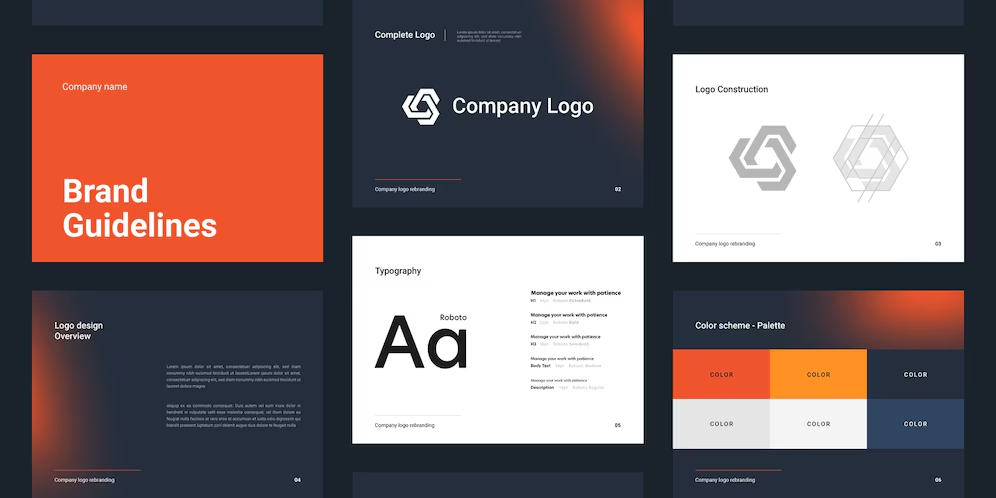Let's be real—in today's oversaturated market, a slick logo or a pretty website doesn't cut it anymore. Sure, aesthetics grab attention, but if you want real growth and deeper connections with your audience, you've gotta think bigger. That's where Strategic Brand Design comes in. It's not just about looking good—it's about blending creativity with hardcore business strategy to build brands that mean something and do something.
At its heart, strategic brand design is all about alignment. It's making sure every visual, every word, and every customer interaction actually supports your business goals. No more treating design like a last-minute coat of paint. Instead, it's a powerhouse tool—shaping how people see your brand, driving sales, building loyalty, and setting you apart in a crowded field.
And this isn't just theory. Places like Dover are catching on fast. More businesses here are waking up to the fact that branding isn't just fluff—it's a legit growth lever. That's why Dover's design agencies are stepping up, offering smarter, strategy-backed branding that actually moves the needle.
What is Strategic Brand Design?
Strategic brand design is more than the creation of logos, color palettes, and visual assets—it is the intentional fusion of design thinking and business strategy. It involves crafting a visual identity that does more than capture attention; it encapsulates the brand's core values, market position, and long-term goals. Every design element—typography, color, layout, iconography—is rooted in a deeper understanding of how the brand should be perceived and how it supports business growth.
The fundamental distinction between traditional design and strategic design lies in intent. Design for aesthetics focuses primarily on visual appeal, often driven by trends or subjective preferences. In contrast, design for outcomes is led by purpose. It's data-informed, insight-driven, and tailored to solve specific business problems—be it increasing user engagement, improving conversion rates, or enhancing customer retention. It goes beyond visual appeal; it's about delivering results.
A truly strategic approach demands a strong foundation of research, brand positioning, and customer insight. This means conducting competitive audits, understanding target demographics, identifying emotional triggers, and mapping the customer journey. These insights shape a design system that is not only visually cohesive but also functionally aligned with the business's direction.
The branding agencies sector is estimated to be worth approximately USD 53.1 billion in 2024, with expectations to grow to USD 90.27 billion by 2033, reflecting a compound annual growth rate (CAGR) of 6.2% throughout the forecast period.
On the other hand, the design agencies market had a valuation of USD 267.7 billion in 2024 and is forecast to rise to USD 346.7 billion by 2030, experiencing a growth rate of 4.4% annually.
When executed effectively, strategic brand design becomes a silent ambassador of the brand—communicating trust, clarity, and relevance in every interaction. It creates a framework for consistency across all platforms, enabling businesses to speak with one voice while adapting to changing market dynamics.
What Exactly is Strategic Brand Design?
Okay, let's clear something up first—strategic brand design isn't just about logos, colors, or making things look pretty (though, yeah, that's part of it). It's where design smashes into business strategy head-on, creating an identity that works as hard as it looks. Think of it like this: every font choice, color, and layout isn't just about aesthetics—it's a calculated move to reflect your brand's values, position in the market, and where you're headed long-term.
Design for Looks vs. Design for Results
- Traditional design = "Make it pop!" (Trendy, subjective, sometimes just... decorative.)
- Strategic design = "Make it work." (Data-backed, purpose-driven, solving real business problems—like boosting engagement, conversions, or loyalty.)
The difference? Intent. One's about attraction; the other's about action.
The Nuts and Bolts: Research First, Design Second
You can't wing this. A rock-solid strategic brand starts with digging into:
- Competitors (What's already out there? How do you stand out?)
- Your audience (Who are they? What makes them care?)
- The customer journey (Where do they meet your brand, and what should they feel?)
This isn't guesswork—it's building a design system that's visually sharp but also functionally aligned with your goals.
By the Numbers: Why This Matters Now
- The branding agency sector is worth $53.1 billion in 2024—and projected to hit $90.27 billion by 2033 (that's a 6.2% growth rate!).
- The design agency market? Even bigger. $267.7 billion in 2024, climbing to $346.7 billion by 2030.
Translation: Businesses aren't just buying "design" anymore. They're investing in branding that drives growth.
The Silent Power Player
Done right, strategic brand design is like your brand's quietest but most persuasive spokesperson. It builds trust, keeps messaging crystal-clear, and stays relevant—even as markets shift. Plus, it gives you a consistent framework across every platform, so you're always recognizable, whether someone spots your Instagram post or walks into your store.

When Creativity Meets Strategy: The Real Magic Happens
Let's be honest—a great design agency (especially a local one like you'd find in Dover, DE) isn't just in the business of making things look good. Their secret sauce? Turning creative flair into real-world business wins. Strategic brand design isn't art for art's sake—it's creativity with a job description: drive growth, build loyalty, and move the needle.
Design With a Mission
Every color, font, website button, or tone of voice should pull its weight. When design is fueled by research and tied to clear goals, it doesn't just sit there being pretty—it works.
Think:
- Logos that boost instant recognition
- Messaging that converts skeptics into buyers
- Experiences that keep customers coming back
This isn't hypothetical. When Mailchimp rebranded, they didn't just get a trendy new look—they repositioned from "email tool" to "must-have marketing platform." Result? Higher retention, broader appeal. Airbnb's "Belong Anywhere" redesign wasn't just a vibe—it drove engagement by doubling down on their core idea.
Dover Businesses, Take Note:
You don't need a global budget to use this playbook. A local rebrand rooted in community insights and strategic goals can:
- Build trust faster ("Oh, these guys get us")
- Stand out in a crowded market
- Turn customers into repeat fans
Data: The Unsung Hero of Creative Work
Guesswork is for horoscopes, not branding. Tools like:
- A/B testing (Which headline actually clicks?)
- Heatmaps (Where do eyes linger on your site?)
- Customer surveys (What words do they use to describe you?)
...turn "I think" into "I know." It's how you refine a brand that resonates—not just one that looks cool on a PowerPoint slide.
The Bottom Line:
When you pair creative risk-taking with business discipline, branding stops being what you say and starts being why you win. For Dover businesses, that means:
- Smarter decisions (No more "pretty but pointless" design)
- Deeper connections (Customers feel understood)
- Real momentum (Growth that's not just hope, but measurable)
In short? Good design is subjective. Strategic design? That's ROI.

Key Components of a Strategic Brand Design Approach
Let's cut through the fluff—building a brand that actually works isn't about slapping colors and fonts together. It's a step-by-step system where every piece connects, from your logo to how you answer customer emails. Skip one, and the whole thing wobbles. Here's how the pros do it:
Brand Discovery: The "Who Are We, Really?" Phase
Before designing anything, you need a brutally honest look at your brand's current state. Think of it like a business MRI:
- Competitor deep dive: What's everyone else doing? Where's our opening?
- Asset audit: Does our old logo still fit, or is it time for a glow-up?
- Stakeholder interviews: What's the team really trying to achieve?
Outcome: A crystal-clear starting point (and a list of what's broken).
Audience Profiling: The "Mind-Reading" Hack
(Because guessing what customers want is expensive.) Your brand isn't for you—it's for them. So:
Key activities during this phase include:
- Build buyer personas: Meet 'Budget-Conscious Brian' and 'Luxury-Loving Lisa.'
- Psychographics: What keeps them up at night? What makes them swipe the credit card?
- Journey mapping: Where do they rage-quit our website? Where do they fall in love?
Pro tip: The more specific, the better. "Ages 25-40" tells you nothing. "Urban millennials who binge TED Talks and hate corporate jargon"—now we're talking.
Visual Identity: Your Brand's First Impression
(And yes, people do judge a book by its cover.) This isn't art class—every color, font, and shape needs a job:
Key components of a visual identity system include:
- Logo: Should work as a favicon and a billboard.
- Colors: Blue for trust? Red for urgency? Choose wisely.
- Typography: Comic Sans = instant credibility killer.
- Rules: No, Karen, you can't stretch the logo to fit your PowerPoint.
Example: Coca-Cola's red isn't just pretty—it's ownable. You see that shade, you think sugar rush.
Messaging & Voice: What to Say (And How to Say It)
(Because 'corporate jargon' isn't a personality trait.)
Key aspects of messaging and tone of voice include:
- Key messages: "We help X do Y in Z time." (Not 'synergistic paradigms.')
- Tone: Friendly? Authoritative? Sarcastic? Pick one.
- Consistency: Your Instagram shouldn't sound like a legal contract.
Warning: Trying to sound 'fun' and 'professional' at the same time usually ends up like a dad dancing at a wedding.
Application: Where the Rubber Meets the Road
(Or: 'Why your website and packaging shouldn't look like estranged cousins.')
Key considerations for application and integration include:
- Packaging: Unboxing should feel like a moment.
- Social media: TikTok isn't LinkedIn. Adapt, but stay recognizable.
- Print/digital: Brochures and emails should feel like they're from the same planet.
Fail point: Ever seen a brand's LinkedIn page look like it's run by a different company than their Instagram? Don't be that brand.
Brand Management: The "Never-Finished" Work
Branding is not a static process. It requires ongoing brand management to remain relevant, adaptable, and aligned with both market trends and consumer expectations.
Key activities in brand management include:
- Annual audits: Is our 'modern' logo now dated?
- Customer feedback: Do people still get what we do?
- Trend tweaks: Not chasing fads, but not ignoring shifts either.
Reality check: Google's logo evolved 8 times. Your brand isn't carved in stone.
Brand Identity vs. Brand Image: The Misconception
A common misconception in branding is the confusion between brand identity and brand image. While they are closely related, they are not the same.
Brand identity refers to the visual and verbal expression of a brand—what a company consciously creates to communicate who it is. It includes elements like the logo, colors, typography, and tone of voice, all of which are carefully crafted through strategic brand design. This is the brand's internal perspective—the foundation upon which all messaging and designs are built.
Brand image, on the other hand, is the perception of the brand by the public—how customers, stakeholders, and the general market view the brand. It is shaped by experiences, interactions, and how the brand is presented across various channels.
Strategic brand design ensures that both identity and image are aligned. Through consistent messaging, targeted design choices, and data-driven insights, businesses can control how their identity is perceived in the marketplace. By focusing on a cohesive strategy, brands can avoid discrepancies where the intended identity doesn't match how customers see them.
In this way, strategic brand design ensures that brand identity and brand image are in sync, fostering trust and long-term loyalty among customers.
Why Businesses Fail Without Strategic Design
While creative branding is essential for differentiation, strategic brand design is the backbone of any successful business identity. Without it, companies often fall victim to common pitfalls that severely hinder growth and sustainability.
Common Pitfalls:
- Inconsistent messaging: When a brand's messaging is unclear or contradictory across platforms, it confuses the audience. Whether it's a social media post that doesn't match the website's tone or an email campaign that doesn't align with advertising, inconsistency erodes trust.
- Weak visuals: An unrefined or unprofessional visual identity can make a business appear amateurish. Poor logo design, clashing colors, or outdated typography reflect badly on the brand and fail to create lasting impressions.
- Disjointed values: When the brand's visual and verbal identity doesn't align with its core values, it leads to a disconnection between the business and its audience. Customers are quick to notice when a brand isn't authentic, and they often move on to more consistent competitors.
Real-World Consequences:
The consequences of these pitfalls are tangible and can be devastating. A lack of trust is one of the most immediate outcomes—customers are less likely to engage with or purchase from a brand that doesn't appear reliable. This leads to low conversion rates and missed sales opportunities.
Moreover, weak branding diminishes brand recognition. Without a cohesive identity, businesses struggle to make an impact in the market, leading to poor customer recall. The result? Lost market share and a decrease in long-term customer loyalty. Without strategic design to back the business vision, all efforts to grow and scale can quickly fall apart.
Strategic design is not just an aesthetic choice—it's a business necessity.
Choosing the Right Strategic Brand Design Company
Selecting the right strategic brand design company is crucial for ensuring that your brand identity aligns with your business goals and resonates with your target audience. When evaluating potential agencies, there are several key criteria to consider to make an informed choice:
Key Criteria to Look For:
- Experience: Look for a design agency with a proven track record in creating successful brand identities. Agencies with experience across various industries bring diverse insights and innovative solutions, enabling them to address your unique challenges effectively.
- Case Studies: Reviewing an agency's past projects is a great way to assess their capabilities and quality. Case studies demonstrate how the agency's design strategy has driven real-world results for businesses similar to yours. It's important to see the before-and-after impact of their work, whether it's increased sales, customer engagement, or brand recognition.
- Research Process: A strategic brand design company should have a clear, research-driven approach. This includes audience insights, market research, and competitor analysis to ensure the brand identity is not only visually appealing but also strategically sound. A good agency will base their design decisions on data, not just creative instinct.
- Cross-Functional Capabilities: The best design agencies offer more than just logo design. They should provide a comprehensive range of services, including digital and print design, web development, messaging strategy, and brand audits. Cross-functional teams ensure that all aspects of your brand identity align across touchpoints.
Why a Design Agency in Dover Could Be the Ideal Partner
Choosing a Design Agency in Dover provides several distinct advantages. Local agencies have a deep understanding of regional trends, customer behavior, and community preferences, which can be pivotal in creating a brand that resonates with your local audience. Additionally, agencies in Dover may offer cost-effective solutions compared to larger firms, while still delivering high-quality, personalized services. Their proximity also allows for more frequent communication and collaboration, leading to a stronger, more aligned brand identity that supports your business goals.
Ready to elevate your brand? Partner with a strategic brand design company in Dover and let us help you transform your brand identity into a powerful business asset. Contact us today to discuss how we can make your brand vision a reality.
Conclusion
Blending creative thinking with strategic planning is a proven way to fuel business growth. When your brand identity is not only visually appealing but also strategically aligned with your goals, it has the potential to deliver real, measurable results—whether it's generating more leads, boosting customer loyalty, or improving overall brand recognition. By ensuring that every creative decision serves a clear business purpose, you can create a brand that not only stands out but also actively supports your success.
It's important for businesses to regularly evaluate their brand to ensure it aligns with their evolving objectives. Performing a brand audit can reveal valuable insights into where enhancements are needed. Working with a professional design agency can help fine-tune your strategy, making sure your brand identity is cohesive and effective.
Ready to transform your brand into a business asset? Contact our Dover-based team of experts today. We specialize in developing brand identities that balance creativity with strategy, driving real results for your business.






